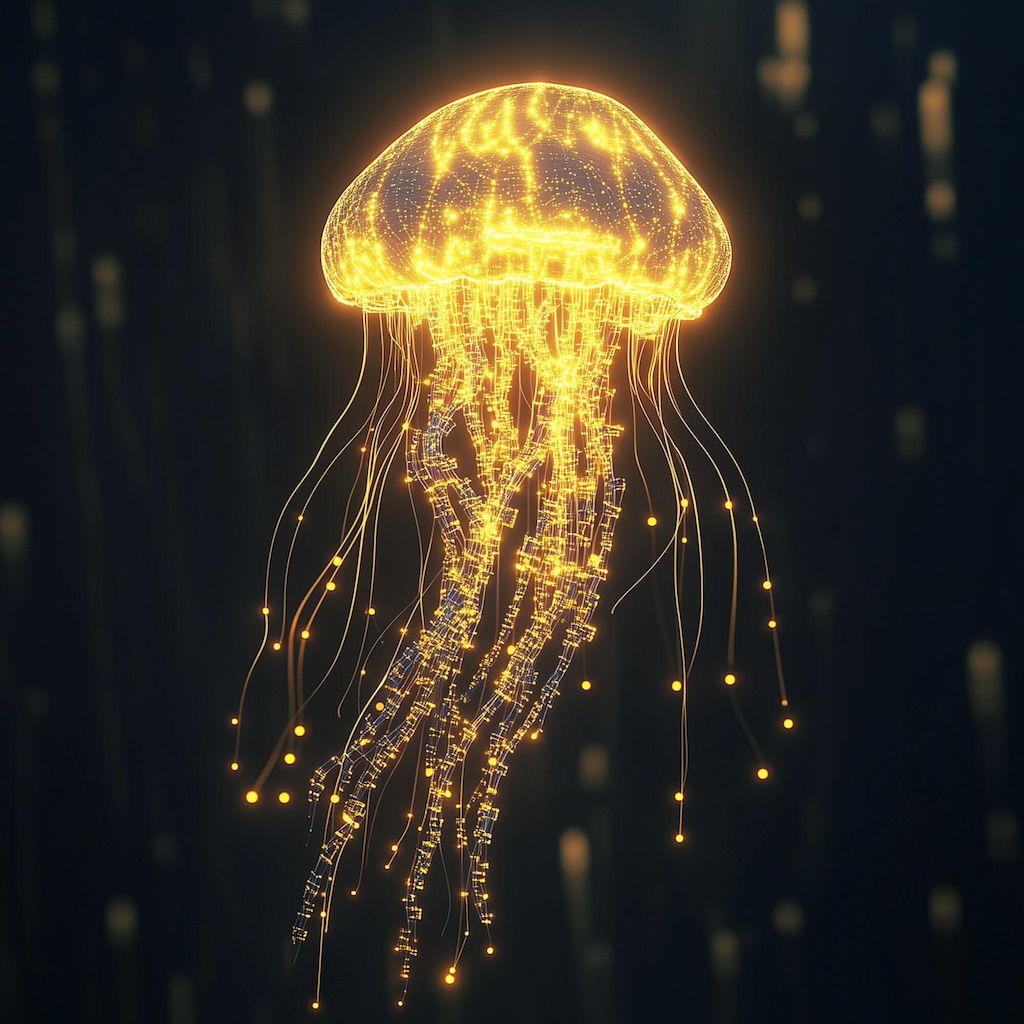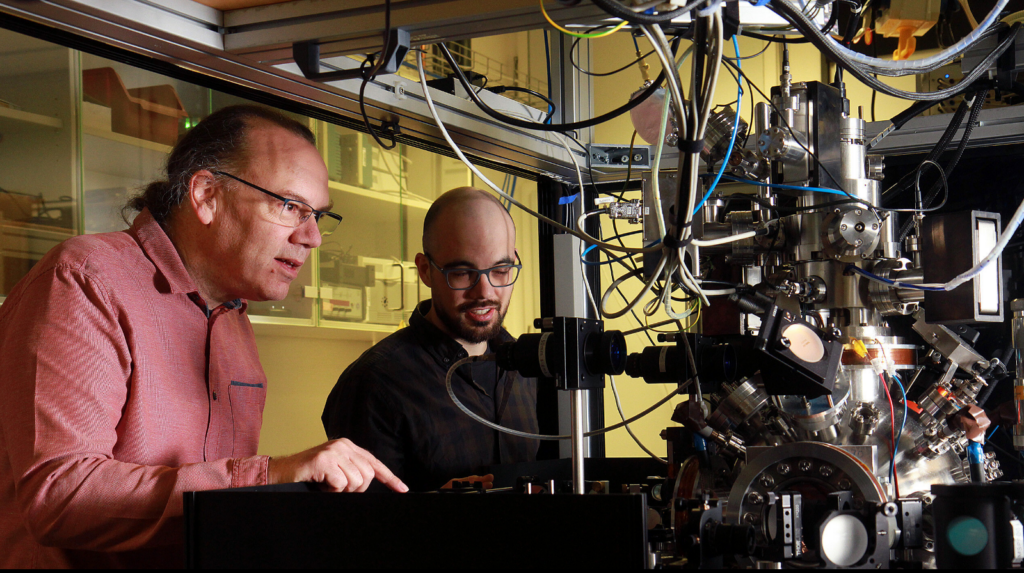Insider Brief:
- Magnetic fields play essential roles in biological and technological processes, and recent research from the University of Chicago and Argonne National Laboratory highlights how quantum-enabled fluorescent proteins like EYFP could have potential applications in cell formation and early disease detection.
- The enhanced yellow fluorescent protein (EYFP), derived from jellyfish, possesses a metastable triplet state that is both stable and optically measurable, making it a strong candidate for quantum sensing.
- Researchers addressed key challenges, including the long lifetime of the metastable triplet state and integration into biological systems, by developing the optically activated delayed fluorescence (OADF) technique, which enables on-demand spin readouts and ensures EYFP’s functionality in living cells.
While most of us are familiar with magnets from childhood games of marveling at the power of their repulsion or attraction, fewer realize the magnetic fields that surround us—and the ones inside us. Magnetic fields are not just external curiosities; they play essential roles in our bodies and beyond, influencing biological processes and technological systems alike. A recent arXiv publication from the University of Chicago’s Pritzker School of Molecular Engineering and Argonne National Laboratory highlights how magnetic fields in the body may be analyzed using quantum-enabled fluorescent proteins, with hopes of applying to cell formation or early disease detection.
The Jellyfish Solution
Detecting subtle changes in magnetic fields may equate to beyond subtle impacts in certain fields. For instance, quantum sensors could be applied to the detection of electromagnetic anomalies in data centers, potentially revealing evidence of malicious tampering. Similarly, they might be used to study changes in the brain’s electromagnetic signals, offering insights into neurological diseases such as the onset of dementia. However, these applications demand sensors that are not only sensitive but also capable of operating reliably in real-world conditions.
Spin qubits, known for their notable sensitivity to magnetic fields, are introduced in the study as a compelling solution. Traditionally, spin qubits have been formed from nitrogen-vacancy centers in diamonds. While these systems have demonstrated remarkable precision, the diamonds’ bulky size in relation to molecules and complex surface chemistry limit their usability in biological environments. This creates a need for a more adaptable and biologically compatible sensor.

The challenge, however, goes beyond finding the right material. A sensor designed for these applications must also be stable enough to operate at room temperature and provide optically measurable data. The authors note that meeting these criteria while retaining sensitivity to minute magnetic field changes has been a consistent roadblock based on existing literature.
However, the answer may be found in jellyfish—precisely, in jellyfish—of all things. Enhanced yellow fluorescent protein (EYFP), a glowing protein derived from jellyfish is already a mainstay in bioimaging and has proven invaluable for tracking biological processes. And while bioluminescence is a feat all its own, this protein is particularly ambitious. It also harbors unique properties, such as its metastable triplet state.
A triplet state refers to two electrons spinning in parallel rather than oppositely, as seen in singlet states. This alignment results in lower energy, making the triplet state relatively stable, or at least long enough to allow precise measurements. Even more beneficial, EYFP’s triplet state is optically measurable, meaning its quantum state can be read using light. This unique combination of stability and measurability establishes EYFP as a strong candidate for a quantum sensing crossover.
Challenges, Of Course
But, of course, behind every seemingly perfect solution is a slew of obstacles to overcome, and EYFP’s transformation into a quantum sensor was no exception. The research team faced several challenges in adapting this bioluminescent protein for quantum sensing, each requiring creative solutions.
One major barrier was the metastable triplet state itself. While this state is highly relevant for quantum sensing, its long lifetime created a challenge—a rare complaint in the development of quantum technologies. The extended duration of the triplet state limited the measurement sequence repetition rate which in turn limits the sensitivity of the sensor. Additionally, at most temperatures, spin depolarization within the triplet state occurs too quickly to allow for reliable readouts—a not so rare complaint in the development of quantum technologies.
The team overcame these limitations by developing a technique called optically activated delayed fluorescence (OADF). By applying a laser pulse, they were able to drive EYFP from its triplet state into a higher energy state. This higher-energy state enabled a process called reverse intersystem crossing (RISC), which accelerates the protein’s transition back to a single, effectively shortening the triple state’s lifetime, eliminating the previously mentioned bottleneck, and enabling on-demand spin readouts.
Another barrier was the challenge of integrating EYFP into real-world environments, particularly biological systems. Many quantum sensors, such as nitrogen-vacancy centers in diamonds, struggle with biological compatibility due to their size and surface chemistry. For EYFP to succeed, it had to retain its quantum properties while operating in the complex and often unpredictable environments of living cells.
In what surely was expressed as a audible sigh of relief, the researchers demonstrated that EYFP could maintain its quantum properties within mammalian cells. By expressing EYFP in these cells, they successfully performed spin readouts and demonstrated its resilience even in harsh, intracellular environments. The protein’s ability to function in aqueous solutions and its genetic encodability further allowed it to seamlessly integrate into biological systems, which is a notable advantage over many existing quantum sensors.
The final hurdle was demonstrating that these properties could translate to practical applications at room temperature. While many quantum technologies require cryogenic conditions to operate effectively, EYFP’s ability to detect static magnetic fields in aqueous environments at room temperature ensures that the protein can be used in a variety of real-world settings without the need for specialized equipment. Through these collective solutions, the research team was able to give EYFP new life as a versatile quantum sensor.
When Quantum Met Bioluminescence
What makes this discovery especially exciting is its ability to bring together what initially appears as distant ideas in biology and quantum technology and manipulate them into complementary technologies. Combining the bioluminescence of jellyfish proteins with the precision of quantum sensors reminds us that the future is not just solely a product of what we know but rather a result of what we dare to combine.
As one researcher noted in a recent post from New Scientist, “You’re piggybacking on what people know how to do well, but it gives you a whole wealth of additional potential information.” Quantum technology often offers solutions before we fully understand the problems it will solve. The story of EYFP is as wondrous as it is practical. What was once a glowing protein existing within the humble confines of a sea jelly could be used to change how we study and understand magnetic fields. It’s a reminder that there are infinite combinations of ingenuity and that the future exists both here and yet to be created. A superposition, if you will.
The next steps involve refining this technology, optimizing EYFP’s quantum properties through techniques like directed evolution, and exploring its use in broader applications. Contributing authors on the study include Jacob S. Feder, Benjamin S. Soloway, Shreya Verma, Zhi Z. Geng, Shihao Wang, Bethel Kifle, Emmeline G. Riendeau, Yeghishe Tsaturyan, Leah R. Weiss, Mouzhe Xie, Jun Huang, Aaron Esser-Kahn, Laura Gagliardi, David D. Awschalom, and Peter C. Maurer.

















